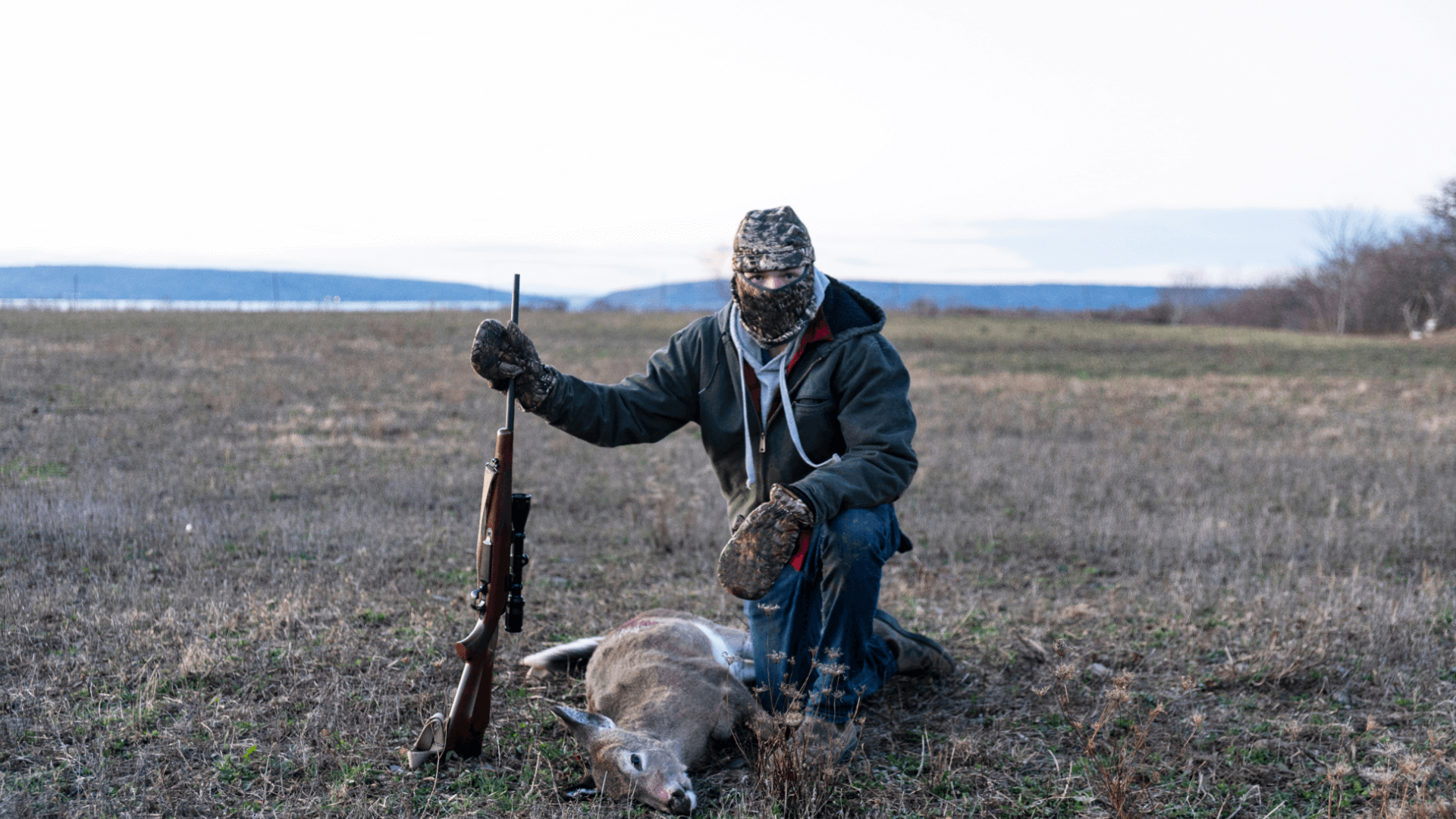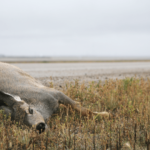The recent deer hunting season in the northern region has been notably less productive than in previous years, with reported decreases in harvest rates reaching approximately 30%. This downturn has caught the attention of state lawmakers and conservation officials, prompting a formal dialogue to address the concerns of the local hunting community. Among those facilitating the discussion were State Senator Mary Felzkowski, together with Representatives Rob Swearingen and Calvin Callahan. They were joined by respected figures such as Bill Smith, chair of the Natural Resources Board, and a representative from the Department of Natural Resources.
Additional political figures, including State Senator Cory Tomczyk, State Representative Chanz Green, and U.S. Representative Tom Tiffany, also participated in the session designed to gather insights on the challenges affecting the deer population in the Northwoods. Their aim was to listen to stakeholders and formulate a strategy for the stewardship of the deer herds and hunting practices. However, Governor Tony Evers and Attorney General Kaul were absent from the session, having declined the invitation.
Overview
Key Takeaways
- Recent hunting season in northern region yielded substantially lower deer harvest numbers, 30% down from 2022.
- State representatives and wildlife officials convened to discuss the impact on local deer populations.
- Strategies and stewardship practices are being considered to address hunting challenges in the Northwoods.
Community Meeting on Declining Hunting Participation
Attendance at the recent meeting demonstrated the community’s significant interest in deer hunting, with 175 individuals present and another 125 joining via an online live stream. The recorded video attracted attention far beyond the live meeting, indicating the broader relevance and concern surrounding the decline of deer hunting traditions in the region.
Participants reflected on a once-vibrant culture surrounding the nine-day gun hunting season, where the air buzzed with excitement and community venues teemed with hunters sharing tales and camaraderie. However, these traditions are waning, with fewer deer camps and hunters choosing different locations or abandoning hunting entirely. Concerns were raised about the potential impact of this decline on future generations, with some expressing fear that a lack of deer sightings could deter youth participation in hunting.
Community Perspectives:
- Decline in Tradition: Nostalgia for the bygone bustling opening days of hunting season.
- Changing Patterns: Shifts toward alternative hunting spots or decreased interest.
- Intergenerational Concerns: Worry that the tradition may not be passed down.
Gregg Walker, a member of the Oneida County Deer Advisory Council and dedicated hunter, shared a personal note that his own older sons had opted not to procure their hunting licenses for the current season, highlighting a tangible example of the trend.
Impact of Wolves on Hunting in Northern Forests
In recent times, the stability of the deer population in the Northwoods has become a point of contention among local hunters and conservation authorities. One identified factor impacting the sustainability of the deer populations is the rising number of wolves in the area. Historically, deer populations experienced fluctuations, with periods of abundance followed by downturns. Currently, wildlife observers report a stark absence of recovery periods for the deer, prompting concerns among stakeholders.
Are you looking for things to do in the summer in Minocqua? Check out our ultimate Minocqua Wisconsin Summer Guide of things to do
Eyeing past management strategies, a comparison revealed that under the guidance of a biologist named Chet Botwinski, deer numbers were maintained at around 20 per square mile within a specified Deer Management Unit 31. But contemporary estimates suggest a drastic decline, with some anecdotes indicating less than three deer per square mile in the same area.
This acute decrease in deer numbers has spurred debates on hunting regulations. During Botwinski’s tenure, had this situation arisen, it is suggested that hunting might have been suspended to allow for herd recovery. Presently, deer appear to be seeking refuge in urban areas to escape predation, suggestive of a disrupted ecological balance.
Discussions have taken place concerning the possible need for legislative action to counteract the decline of deer herds. Some lawmakers point out the constraints posed by existing wildlife management plans, particularly those regarding the management of wolves, which are often met with resistance due to political influence and cultural considerations. They also highlight that public input into wolf management has not proportionally represented the views of the Northwoods residents.
Engagement from the community has been highlighted as a potential avenue for bringing the deer-wolf dynamic to the forefront of wildlife policy discussions. Advocates for change suggest an increase in involvement from individuals who hold a vested interest in hunting and outdoor recreation as a means to influence wildlife management decisions.
Furthermore, former members of natural resources boards with expertise in deer management have participated in these dialogues, emphasizing the need for well-thought-out strategies tailored to current conditions. Their presence suggests a willingness to integrate informed opinions and specialist knowledge into the process of addressing the declining deer numbers and their complex relationship with wolf populations.
The Complexity of Hunting Decline
The decline in hunting is often attributed to a variety of commonly cited factors, yet the issue is more intricate than these surface-level claims suggest. It’s not merely about the extremes of weather or hunters’ shifting interests in game harvest. For example, while wolf predation is frequently spotlighted as a critical factor, proper integration of such data into wildlife management could negate its impact as a negative force.
At the core of this complexity is the implementation, or lack thereof, of state wildlife management plans. Such plans are intended to guide quota systems based on empirical harvest data. Consider the nine-year dataset that could inform the setting of quotas yet is overlooked in practice. The embrace of hard data versus population models delivers a compelling alternative approach to managing deer herds, exemplified by the Kroll Plan, which was developed as a harvest-response system.
Regarding the Kroll Plan, a marked shift in deer management was proposed, shifting from hypothetical models to concrete harvest data. This harvest-response system was anticipated to evaluate annual herd responses, especially the buck kill metric in subsequent years, potentially offering a clearer picture for quota decisions.
Local wildlife councils, known as County Deer Advisory Councils (CDACs), have become integral to this process. The original vision set the CDACs as decentralized bodies comprised of various stakeholders, including hunters, who arguably have the keenest insight into local wildlife due to their direct experiences in the wilderness. Initially, these councils were seen as the means to transfer quota-setting power from bureaucratic hands to those with firsthand knowledge of the landscape’s reality.
Are you looking for things to do in the winter in Minocqua? Check out our ultimate Minocqua Wisconsin Winter Guide of things to do
However, the dynamic within these councils and their relationship with the Department of Natural Resources (DNR) has been contentious. Proposals put forward by the CDACs have faced alterations and challenges, pointing towards a struggle between local input and state-level control over wildlife management.
Moreover, during public forums, hunters and community members reiterate the ongoing challenges faced on the ground. Narratives of diminishing deer sightings, increased wolf tracks, and shifting hunting grounds to keep hunting traditions alive add personal accounts to the technical discussions held within decision-making circles. The importance of these experiences and ensuring accurate information flow from the DNR has been emphasized by community leaders.
Amplifying local voices and experiences in wildlife management discourse is crucial. For instance, transparency issues surrounding wolf population estimates inflame tensions between conservation efforts and hunting traditions. Adequate explanations and data sharing from authorities can bring clarity and foster more nuanced discussions around predator management.
Public meetings serve as platforms for such voices to be heard and integrated at higher levels of policymaking. These sessions provide space for hunters and stakeholders to bring forward their concerns and highlight the interplay between diverse issues like chronic wasting disease, agricultural impacts, and habitat management that contribute to the multifaceted decline in hunting.
In times of heated debate over wildlife management, it is evident that a collective effort is necessary. Legislators, stakeholders, and community members are encouraged to engage proactively, with the assurance that concerns raised at the grassroots will resonate within the legislative halls.
Perspective shifts within the DNR have also been envisioned, suggesting locating decision-makers within the environments they manage. This proposed proximity could potentially deepen the understanding of the nuances in wildlife dynamics and lead to more informed decisions that reflect the realities observed by those immersed in the Northwoods.





